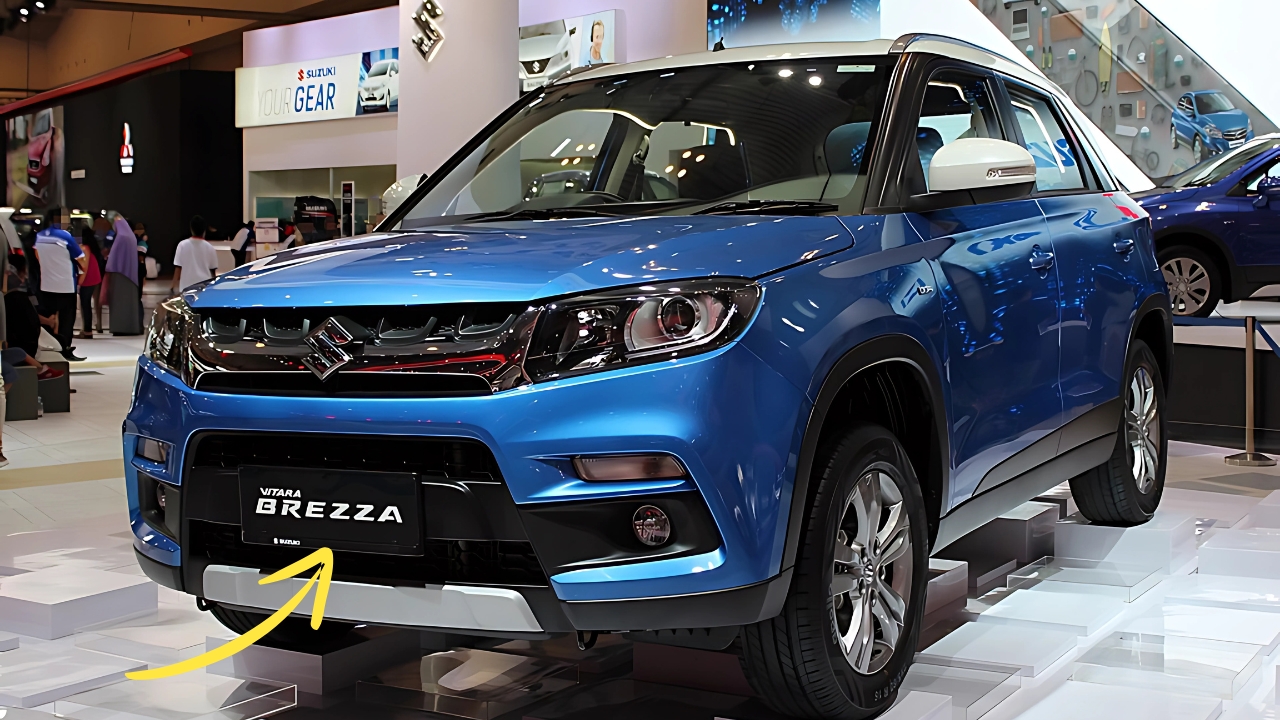Maruti Brezza CNG: In a market increasingly defined by electrification headlines and ambitious future-focused technology, Maruti Suzuki has taken a refreshingly pragmatic approach with the Brezza CNG.
This factory-fitted compressed natural gas variant of their popular compact SUV addresses current Indian market realities: rising fuel costs, limited charging infrastructure, and buyers seeking immediate economical solutions rather than revolutionary promises.
Having spent two weeks with this uniquely positioned vehicle across varied driving conditions, I’ve developed nuanced impressions of its strengths and compromises within the context of Indian motoring needs.
Maruti Brezza CNG: Market Context: Understanding the Brezza CNG’s Position
To properly evaluate the Brezza CNG, one must first understand the specific market dynamics it addresses. CNG infrastructure has expanded significantly across major Indian cities and connecting highways, creating viable fuel alternatives beyond traditional petrol and diesel options.
With CNG priced approximately 40-50% lower than petrol (₹74/kg versus ₹106/liter during my testing period), the economic case becomes compelling for high-usage customers despite the higher initial acquisition cost.
The Brezza CNG occupies a particularly interesting position as one of the first factory-fitted CNG systems in the compact SUV segment.
While CNG options have been available in smaller hatchbacks and sedans for years, their introduction to more lifestyle-oriented vehicles like crossovers represents a significant shift in how manufacturers perceive alternative fuel acceptance among aspiration-driven buyers.
Engineering Integration: Factory Advantage
The most significant advantage of the factory-fitted CNG system becomes apparent through its seamless integration. Unlike aftermarket conversions that often compromise luggage space entirely, Maruti’s engineers have developed a remarkably well-packaged solution.
The 55-liter water-equivalent capacity CNG cylinder occupies a portion of the boot while still leaving approximately 209 liters of usable space – sufficient for weekend luggage or everyday grocery runs.
This integration extends to safety considerations, with the CNG system incorporating multiple solenoid valves, a microswitch for preventing ignition when refueling, and thermal protection that automatically cuts supply during excessive temperature conditions.
The fuel lid houses both petrol and CNG filling points, eliminating the awkward separate fillers common in aftermarket conversions.
Perhaps most impressive is the dual ECU setup that manages both fuel systems, automatically switching between CNG and petrol when necessary without driver intervention.
During cold starts, the system briefly uses petrol before seamlessly transitioning to CNG once operating temperature is reached – a refinement notably absent in aftermarket solutions.
Driving Dynamics: Realistic Compromises
The Brezza CNG utilizes the familiar 1.5-liter K15C petrol engine, though output figures differ between fuel modes.
On petrol, the engine produces 103 horsepower and 137 Nm of torque, while CNG operation reduces this to 87 horsepower and 121.5 Nm – approximately 15% less. This reduction proves noticeable but not dramatically impactful during typical driving scenarios.
Urban maneuverability remains a Brezza strong point regardless of fuel type, with light steering and compact dimensions making city navigation effortless. Highway performance reveals the power differential more clearly, with overtaking maneuvers requiring additional planning, particularly when fully loaded.
The standard 5-speed manual transmission (no automatic option is offered with CNG) provides well-spaced ratios that help maximize available power, though a sixth gear would improve highway cruising refinement.
Suspension tuning remains unchanged from the standard Brezza, delivering reasonable comfort over urban imperfections while maintaining composure during directional changes.
The additional approximately 100kg from the CNG system actually improves ride quality slightly, better absorbing sharp impacts though at some cost to handling agility during quick transitions.
The most noticeable dynamic change comes through marginally reduced braking performance, requiring slightly earlier brake application to account for the increased weight. After brief adjustment, this becomes second nature, but represents an important consideration for those accustomed to the standard model.
Efficiency Economics: The Ownership Equation
The Brezza CNG’s primary selling proposition centers on running costs, and here it delivers compelling real-world results. During my testing period across varied conditions, the vehicle consistently returned 26-28 km/kg of CNG – translating to running costs approximately 60% lower than the petrol equivalent per kilometer.
The 55-liter CNG cylinder provides a range of roughly 400-450 kilometers on gas alone, with the 48-liter petrol tank available as backup for another 650+ kilometers.
This dual-fuel capability creates a practical combined range exceeding 1,000 kilometers between complete refueling stops – a significant advantage for those in areas with still-developing CNG infrastructure.
The ability to switch between fuels (either automatically when CNG depletes or manually via a dashboard button) eliminates the range anxiety sometimes associated with alternative fuel vehicles.
The economic case strengthens further for high-usage customers like ride-share drivers or sales professionals, with typical payback periods of 24-30 months for the additional acquisition cost compared to the standard petrol variant, followed by substantial ongoing savings.
This calculation naturally depends on individual usage patterns and local fuel pricing, but creates a compelling value proposition for the right customer profile.
Living Experience: Daily Practicality
Beyond performance metrics and economic calculations, the Brezza CNG proves impressively livable during daily use. The sacrifice of some boot space represents the most noticeable compromise, though thoughtful packaging ensures this doesn’t become prohibitive for typical usage patterns.
Interior accommodation remains identical to the standard model, comfortably seating five adults with reasonable comfort.
The feature set matches mid-to-high petrol variants, including the 9-inch touchscreen infotainment system with wireless Apple CarPlay/Android Auto, automatic climate control, cruise control, and a comprehensive safety package including six airbags on higher trims.
This equipment parity eliminates the sense of compromise sometimes associated with alternative fuel vehicles.
Refueling processes require brief adjustment for those new to CNG, primarily due to the different nozzle type and sequential filling requirement (CNG first, then petrol if needed).
The growing network of CNG stations in major cities minimizes inconvenience, though infrastructure remains less developed in smaller towns and rural areas – an important consideration for those who frequently travel beyond urban centers.
Maruti Brezza CNG:
The Brezza CNG ultimately succeeds by addressing current market realities rather than promising revolutionary change.
Its thoughtful integration of proven technology creates immediate economic benefits while maintaining most of what makes the standard Brezza appealing: distinctive styling, reasonable feature content, and everyday usability.
For urban dwellers facing rising fuel costs and seeking practical solutions within established infrastructure limitations, the Brezza CNG offers a compelling compromise between economy and lifestyle aspirations.
In choosing evolutionary improvement over revolutionary promises, Maruti has created a vehicle that delivers tangible benefits to consumers today rather than tomorrow – a refreshingly pragmatic approach in an industry increasingly defined by future-focused narratives.

